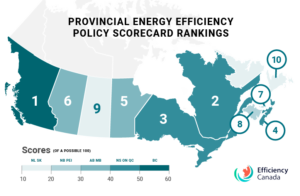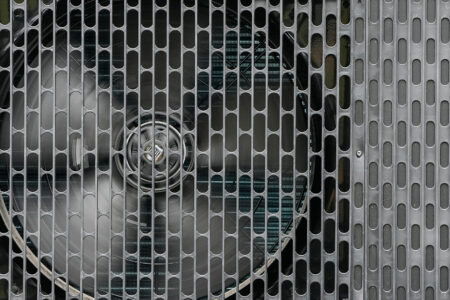
Climate and energy policy news is filled with talk of regional tensions over pipelines and carbon taxes. These policy debates become regional ones because certain provinces are rich in particular resources, such as oil and hydroelectricity. While many energy production methods are regionally concentrated, energy waste is everywhere. That means there is an energy efficiency resource to be found in houses, businesses, and transportation systems throughout the country, and taking advantage of this resource is a goal that can unite our political leaders.
Energy efficiency is a must for any energy and climate change strategy. It creates jobs, improves affordability, and makes all industries more productive. If every province and territory were to implement comprehensive energy efficiency policies, those energy savings would add up to be a large national resource. The energy we save could meet 40 percent of our national energy needs by 2050, the International Energy Agency estimates. In other words, if we don’t focus on efficiency, we will need to produce more energy to move goods and people, operate factories, and heat and light our buildings. Needing to service an extra 40 percent of our energy needs could put our climate-change targets out of reach.
Yet, higher-performance building codes, utility programs, appliance standards, and industrial energy-management systems often fly under the political radar. These policies deserve more attention, especially considering that 436,000 Canadians work in energy efficiency, which is more than the oil and gas and telecommunications sectors.
Provincial policy-makers need a way to track best practices and compare notes on programs and policies, and as a nation we should be encouraging friendly competition across the provinces to maximize their efficiency potential.
This is why Efficiency Canada launched our nation’s first provincial energy efficiency scorecard. We are a research and advocacy group based out of Carleton University dedicated to building an energy-efficient economy. Our scorecard provides a comprehensive, transparent and evidence-based way to benchmark energy-efficiency policies across five areas: programs, enabling policies, buildings, transportation and industry.
This year, British Columbia placed first. Its high score is driven by the BC Energy Step Code, which provides a path towards net-zero energy-ready buildings, increased natural-gas savings targets, and support for vehicle electrification.
The Scorecard also highlights different areas of leadership across the country. Quebec leads in transportation, and Nova Scotia leads in programs. Ontario is the only province with a mandatory energy reporting requirement for buildings. PEI is making significant investments in energy upgrades for low-income households. Efficiency Manitoba is a new Crown corporation overseeing provincewide energy savings targets enshrined in legislation. Alberta is implementing innovative approaches to attract financial investors to upgrading buildings, and Saskatchewan was the first to adopt the latest version of the National Energy Code for Buildings. All provinces have unique strengths and are contributing to creating a more efficient economy.
All provinces also have many opportunities to improve. We set a maximum score out of 100, with no province achieving above 60. Looking south of the border shows that even the top Canadian provinces could be saving more. For instance, the highest annual electricity savings are found in Ontario and Nova Scotia: 1.4 percent and 1.3 percent of sales respectively, yet leading American states are consistently saving 2-3 percent of sales.
There are also common gaps across all provinces where the federal government could enable further provincial action. A federal initiative to unite provinces to build a more energy-efficient economy should therefore include:
- Catalyzing Private Finance
Many provincial governments and utilities offer consumer loans for energy-efficiency improvements, yet few provinces have strategies aimed at attracting private finance to upgrade buildings. The new federal government can enable larger provincial energy savings by creating national or regional “green banks,” following examples in New York and Connecticut. These institutions bridge market gaps to attract private finance to clean-energy investments by using a range of techniques, such as reducing initial risks, co-investing in building upgrades, promoting common energy saving standards, and aggregating smaller projects into larger portfolios for sale in financial markets.
- Supporting Building Code Implementation
The Scorecard found that provinces dedicate few resources to promoting compliance – for example, through building energy codes; by dedicating resources to energy code enforcement; and activities such as training and technical assistance for builders. If compliance rates are low, provincial adoption of national model building energy codes will not result in the expected energy savings. In the US, the Obama administration provided state funding to implement more stringent building codes with a 90 percent compliance target.
- Transforming Heating Markets
In 2017, federal and provincial energy ministers signed onto a market transformation roadmap to increase the residential building market for windows, and space and water heating systems (electric and/or natural gas heat pumps, for example). Provincial activities such as technology demonstrations, training, and incentive programs need to ramp up significantly to reach these national objectives.
- Training for Efficiency Jobs
The Scorecard uncovered gaps in the number of energy advisors and managers available in some provinces. Federal goals to retrofit residential and commercial buildings and to label building energy use require a professional workforce. Canadians across the country can find meaningful employment in energy efficiency.
These are priorities that produce economic and environmental benefits across the country.
We will update our Scorecard every year to identify provincial policy needs and share best practices. The efficiency scorecard will track which province is doing the most to exploit the energy efficiency resource found in all of our homes, businesses, and transport systems. This friendly competition should be a welcome break from regional squabbles over carbon taxes and pipelines.
Photo: Shutterstock, by gualtiero boffi
Do you have something to say about the article you just read? Be part of the Policy Options discussion, and send in your own submission. Here is a link on how to do it. | Souhaitez-vous réagir à cet article ? Joignez-vous aux débats d’Options politiques et soumettez-nous votre texte en suivant ces directives.










